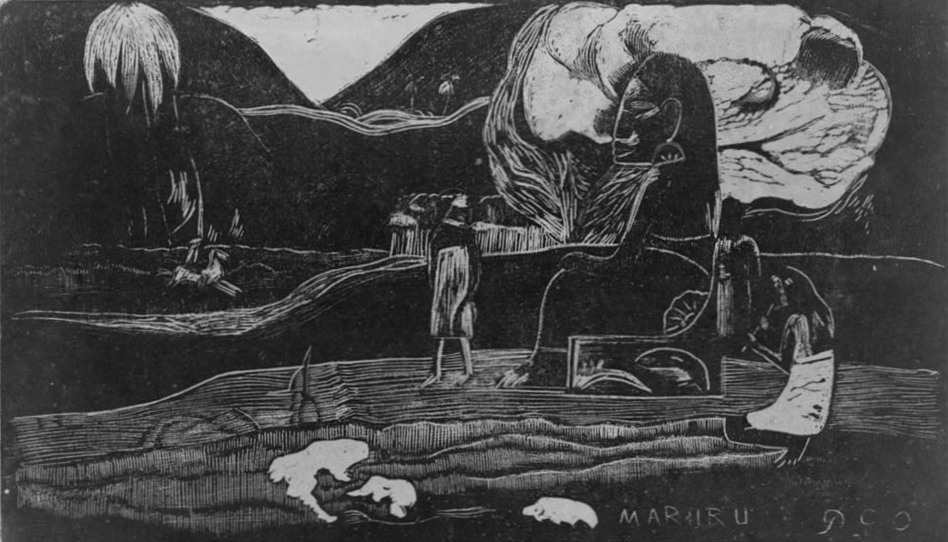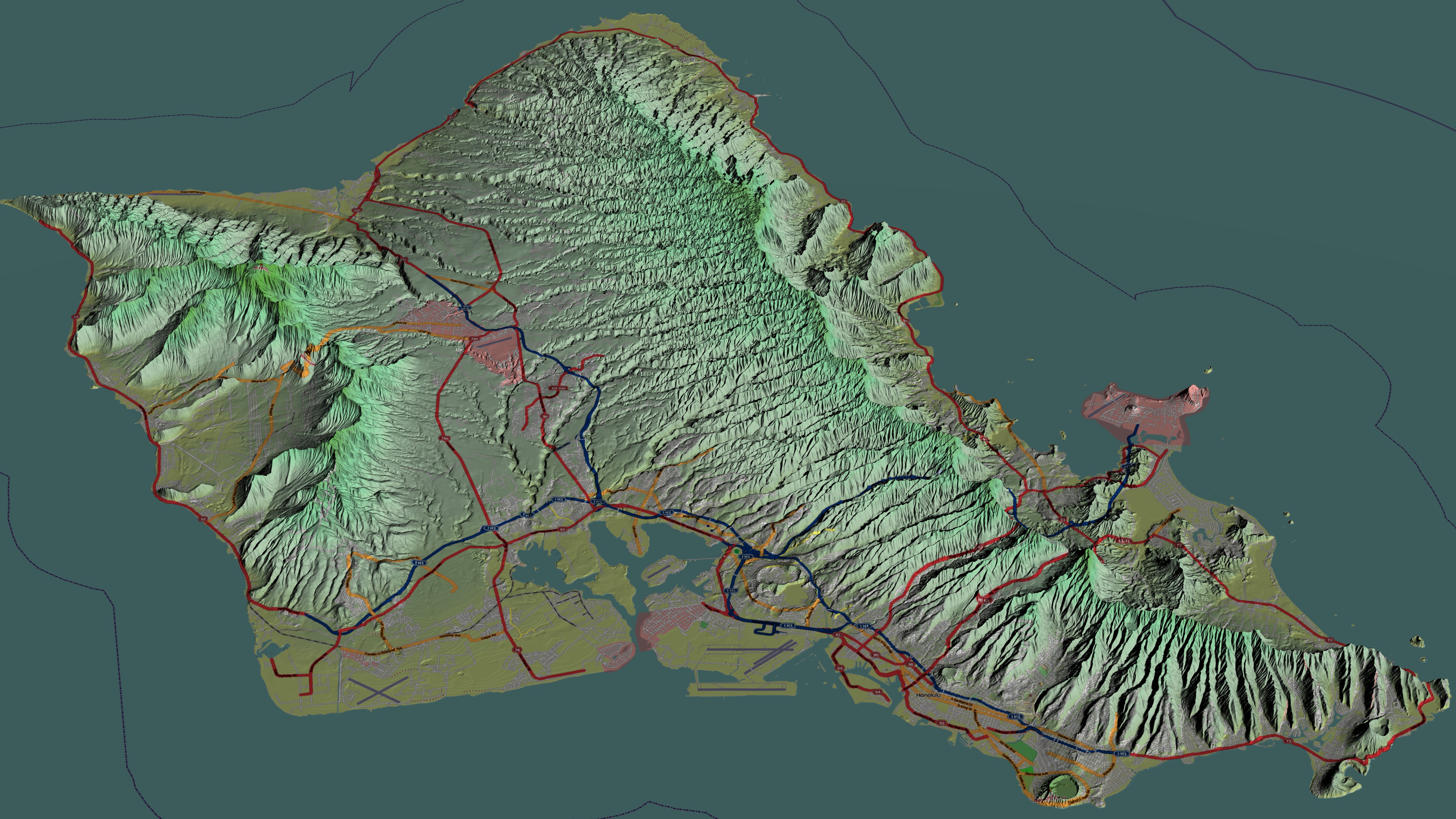|
Hineuki
::''See also "Hina (chiefess)".'' Hineuki (also called Hinakeʻuki or simply Hina; ''keuki'' = "tantalizer") was a Hawaiian noble lady and Chiefess of the island of Hawaiʻi as the wife of Kukohou, ''Aliʻi Nui'' of Hawaiʻi. She was named after the goddess Hina, who was one of the most important deities in the religion of the Ancient Hawaiians. Life Lady Hineuki — named after Hina — was a daughter of Aliʻiponi and his consort, Lady Hinamaileliʻi (Hinamaiheliʻi), who was a daughter of Ko and his sister, Lady Hinaʻauamai — children of the Chief Pilikaʻaiea (often simply called Pili) and his sister, Lady Hina-au-kekele. Pili was succeeded by the High Chief Kukohou, who was his descendant; Hineuki was Kukohouʻs maternal half-sister. Kukohou and Hineuki were married, according to the customs of the Hawaiian chiefs, and their union was considered sacred. Their son was High Chief Kaniuhu, a successor of his father, and through him, Hineuki was a grandmother of Chief Kani ... [...More Info...] [...Related Items...] OR: [Wikipedia] [Google] [Baidu] |
Hina (goddess)
Hina is the name assigned to a number of Polynesian deities. The name Hina usually relates to a powerful female force (typically a goddess or queen) who has dominion over a specific entity. Some variations of the name Hina include Sina, Hanaiakamalama, and Ina. Even within a single culture, Hina could refer to multiple goddesses and the distinction between the different identities are not always clear. In Hawaiian mythology, the name is usually paired with words which explain or identify the goddess and her power such as Hina-puku-iʻa (Hina-gathering-seafood) the goddess of fishermen, and Hina-ʻopu-hala-koʻa who gave birth to all reef life. Hina continues to be a figure worshiped in many of the Polynesian religionsStokes, J. F. G., Heiau of Molokai. 1909 in MS. ''The Ancient Worship of the Hawaiian Islanders'', edited by W. T. Bringham. Archives, B.P. Bishop Museum, Honolulu. and her stories serve as traditions that unite Polynesia, specifically the Hawaiian Islands. New Zea ... [...More Info...] [...Related Items...] OR: [Wikipedia] [Google] [Baidu] |
Kukohou
Kukohou (or Kukohoa) was High Chief of the Island of Hawaiʻi in ancient Hawaii Ancient Hawaii is the period of Hawaiian history preceding the unification in 1810 of the Kingdom of Hawaii by Kamehameha the Great. Traditionally, researchers estimated the first settlement of the Hawaiian islands as having occurred sporadical .... His title was ''Alii Nui'' — "Chief of the island". His famous descendant was King Kamehameha I. A member of the Pili line, Kukohou was son of Loʻe and his wife, Hinamaileliʻi, and he succeeded his great-grandfather Pilikaʻaiea. Wife of Kukohou was his half-sister Hineuki (Hina-keʻuki). Their son was named Kaniuhu, and he ruled after Kukohouʻs death.According to one chronology, Kukohou died in 1185. References {{Reflist Bibliography * Abraham Fornander. ''An Account of the Polynesian Race: Its Origin and Migrations''. Charles E. Tuttle Company. 1969. * David Malo. ''Hawaiian Antiquities''. Bishop Museum Press. 1951. House of Pili Ha ... [...More Info...] [...Related Items...] OR: [Wikipedia] [Google] [Baidu] |
Kaniuhu
Chief Kaniuhu ( Hawaiian: ''Aliʻi Kaniuhu'') was an ancient Hawaiian noble and the High Chief (Hawaiian: ''Aliʻi Nui'') of the Island of Hawaiʻi (the "Big Island"). He was a member of the “Pili line”, as a descendant of Chief Pilikaaiea and his sister Hina, who were born on Tahiti (''Kahiki''). Etymology Kaniuhu’s name means “grief/sorrow” in Hawaiian. He is also called Kaniuhi. Life Early life and marriage Kaniuhu was born on the Big Island, in ancient Hawaii, to the High Chief Kukohou and his half-sister, Lady Hineuki, whose sexual union was considered sacred, according to the laws of the Hawaiians. In ancient Hawaii, nobles born from the “sacred unions” were thought to be gods on the Earth. Whilst he was still a boy, he was circumcised, which was a rite of passage for the boys in Hawaii. It is unknown did he have any siblings. The wife of Kaniuhu was Lady Hiliamakani, whose parents are not known. They had a son named Kanipahu.Peleioholani, Solo ... [...More Info...] [...Related Items...] OR: [Wikipedia] [Google] [Baidu] |
Hina (chiefess)
Hina may refer to: People and deities * Hina (given name), including a list of people and fictional characters with the name * Hina (chiefess), a name given to several noble ladies who lived in ancient Hawaii * Hina (goddess), the name assigned to a number of Polynesian deities. * Hina (singer), of 2021 group Lightsum Other uses * Hina, Cameroon, a town * Hina language, a Chadic language spoken in northern Cameroon * HINA (''Hrvatska izvještajna novinska agencija''), the Croatian news agency * Hina, a synonym of ''Gasparia'', a genus of spiders * Cyclone Hina (other), several tropical cyclones See also * Henna, a dye, and the temporary body art resulting from the staining of the skin from the dyes * ''Hinamatsuri , also called Doll's Day or Girls' Day, is a religious (Shinto) holiday in Japan, celebrated on 3March of each year. Nussbaum, Louis-Frédéric (2005)"Hina Matsuri"in ''Japan Encyclopedia'', p. 313. Platforms covered with a red carpet–mate ... [...More Info...] [...Related Items...] OR: [Wikipedia] [Google] [Baidu] |
Kalapana Of Hawaiʻi
Kalapana was a High Chief who lived in ancient Hawaii. Kalapana is also known as Kalapanakuʻioʻiomoa and Kalapaua. Kalapanakuʻioʻiomoa is his longest name that includes the nickname. He is commonly known as either ''Kalapa'' or ''Kalapana''. Family Kalapana was possibly a son of Prince Kanaloa and his sister Makoʻani, who are the children of Hualani of Molokai and Chief Kanipahu. Kalapana married Malamaʻihanaʻae and their son was Chief Kahaimoelea. Reign According to the legends, Kalapana was a successor of the cruel Chief Kamaiole.Abraham Fornander Abraham Fornander (November 4, 1812 – November 1, 1887) was a Swedish-born emigrant who became an important journalist, judge, and ethnologist in Hawaii. Early life and education Fornander was born in Öland, Sweden on November 4, 1812, to An .... ''An Account of the Polynesian Race: Its Origin and Migrations''. References {{DEFAULTSORT:Kalapana of Hawai'i Hawaiian chiefs House of Pili ... [...More Info...] [...Related Items...] OR: [Wikipedia] [Google] [Baidu] |
Oahu
Oahu () ( Hawaiian: ''Oʻahu'' ()), also known as "The Gathering Place", is the third-largest of the Hawaiian Islands. It is home to roughly one million people—over two-thirds of the population of the U.S. state of Hawaii. The island of O’ahu and the Northwestern Hawaiian Islands constitute the City and County of Honolulu. The state capital, Honolulu, is on Oʻahu's southeast coast. Oʻahu had a population of 1,016,508 according to the 2020 U.S. Census, up from 953,207 people in 2010 (approximately 70% of the total 1,455,271 population of the State of Hawaii, with approximately 81% of those living in or near the Honolulu urban area). Name The Island of O{{okinaahu in Hawaii is often nicknamed (or translated as) ''"The Gathering Place"''. It appears that O{{okinaahu grew into this nickname; it is currently the most populated Hawaiian Island, however, in ancient times, O{{okinaahu was not populous and was outranked by the status of other islands. The translation of ''"ga ... [...More Info...] [...Related Items...] OR: [Wikipedia] [Google] [Baidu] |
Hemā (mythology)
Hemā is a figure in both Hawaiian and Maori mythology. Māori In Māori people, Māori Polynesian narrative, mythology, Hema is a son of Whaitiri and Kaitangata (mythology), Kaitangata and the father of Tāwhaki and Karihi. In North Island stories, he was killed by the Ponaturi, evil creatures who live by day in the water. Tāwhaki, Karihi and their mother trick the Ponaturi into entering a house, and then locked them in, claiming there was still time before the dawn. They then opened the door after sunrise, and the Ponaturi were killed by the exposure to sunlight (Tregear 1891:61, 496). The only survivor (in one account) was Tongahiti, Tonga-Hiti and in another account Flathead grey mullet, kanae, the grey mullet. Hawaii In Hawaiian religion, Hawaiian mythology, Hemā and his brother Puna are sons of the man named Aikanaka (mythology), Aikanaka by his consort, Hina (chiefess), Hinahanaiakamalama — often simply called Hina. His son was Kaha'i. Hina is disgusted by her children's ... [...More Info...] [...Related Items...] OR: [Wikipedia] [Google] [Baidu] |
Hawaiian Kingdom
The Hawaiian Kingdom, or Kingdom of Hawaiʻi ( Hawaiian: ''Ko Hawaiʻi Pae ʻĀina''), was a sovereign state located in the Hawaiian Islands. The country was formed in 1795, when the warrior chief Kamehameha the Great, of the independent island of Hawaiʻi, conquered the independent islands of Oʻahu, Maui, Molokaʻi and Lānaʻi and unified them under one government. In 1810, the whole Hawaiian archipelago became unified when Kauaʻi and Niʻihau joined the Hawaiian Kingdom voluntarily. Two major dynastic families ruled the kingdom: the House of Kamehameha and the House of Kalākaua. The kingdom won recognition from the major European powers. The United States became its chief trading partner and watched over it to prevent other powers (such as Britain and Japan) from asserting hegemony. In 1887 King Kalākaua was forced to accept a new constitution in a coup by the Honolulu Rifles, an anti-monarchist militia. Queen Liliʻuokalani, who succeeded Kalākaua in ... [...More Info...] [...Related Items...] OR: [Wikipedia] [Google] [Baidu] |
Kamehameha I
Kamehameha I (; Kalani Paiea Wohi o Kaleikini Kealiikui Kamehameha o Iolani i Kaiwikapu kaui Ka Liholiho Kūnuiākea; – May 8 or 14, 1819), also known as Kamehameha the Great, was the conqueror and first ruler of the Kingdom of Hawaii. The state of Hawaii gave a statue of him to the National Statuary Hall Collection in Washington, D.C. as one of two statues it is entitled to install there. Birth and childhood Paternity and family history Kamehameha (known as Paiea at birth), was born to Kekuʻiapoiwa II, the niece of Alapainui, the usurping ruler of Hawaii Island who had killed the two legitimate heirs of Keaweʻīkekahialiʻiokamoku during civil war. By most accounts he was born in Ainakea, Kohala, Hawaii. His father was Keōua Kalanikupuapa'ikalaninui; however, Native Hawaiian historian Samuel Kamakau says that Maui monarch Kahekili II had '' hānai'' adopted (traditional, informal adoption) Kamehameha at birth, as was the custom of the time. Kamakau believe ... [...More Info...] [...Related Items...] OR: [Wikipedia] [Google] [Baidu] |
Edith Kawelohea McKinzie
Edith Kawelohea Kapule McKinzie (October 22, 1925 – October 21, 2014) was a Kanaka Maoli genealogist, educator, author, and an expert in hula and chant. She published two books on Hawaiian genealogy, was Director of the Hawaiian Language Newspaper Indexing Project, and taught traditional hula and chant across the United States. In 2004, she was named a Living Treasure of Hawaii for her contributions to Hawaiian culture and heritage. Early life Edith Kawelohea Kapule was born on October 22, 1925, in Honolulu, Hawaii. She was the eldest of three siblings, with a sister named Alexandra and a brother named Harry Jr. Their father, Harry Kawelo Kapule, was a Hawaiian from Holualoa, and their mother, Caroline "Carrie" Costa, was a Portuguese woman living in Pauoa. Kapule graduated from McKinley High School and went on to study at the University of Hawaii, earning an undergraduate degree in Hawaiian Studies, a master's degree in Education, Curriculum and Instruction, and a Professi ... [...More Info...] [...Related Items...] OR: [Wikipedia] [Google] [Baidu] |




